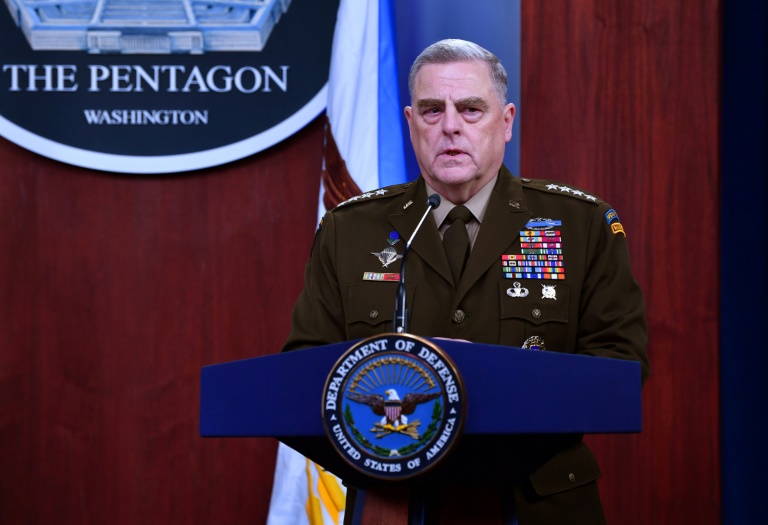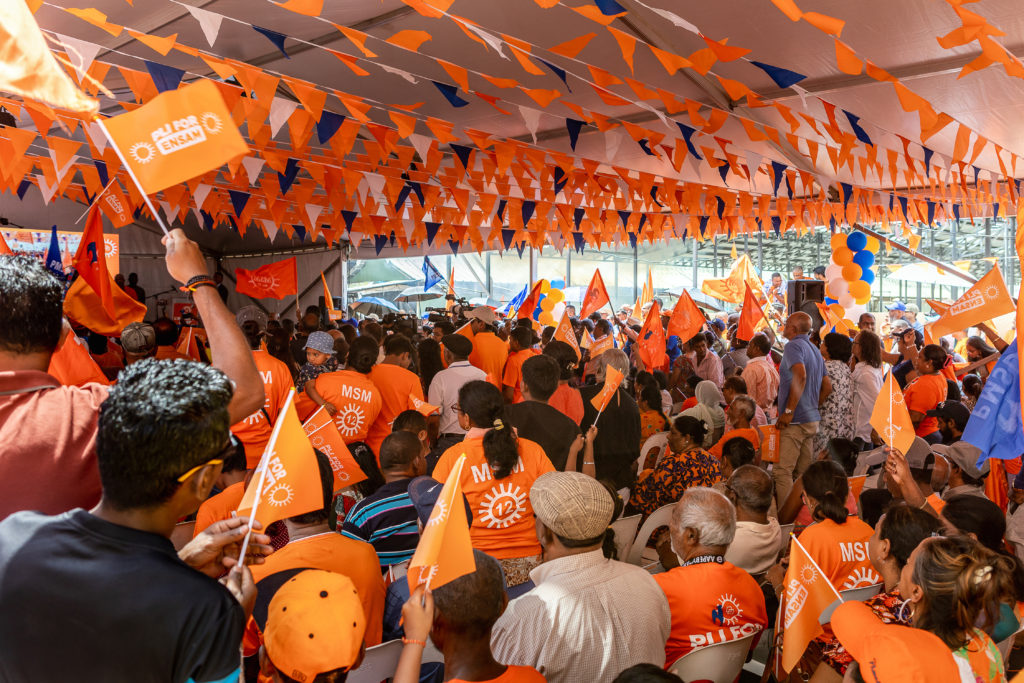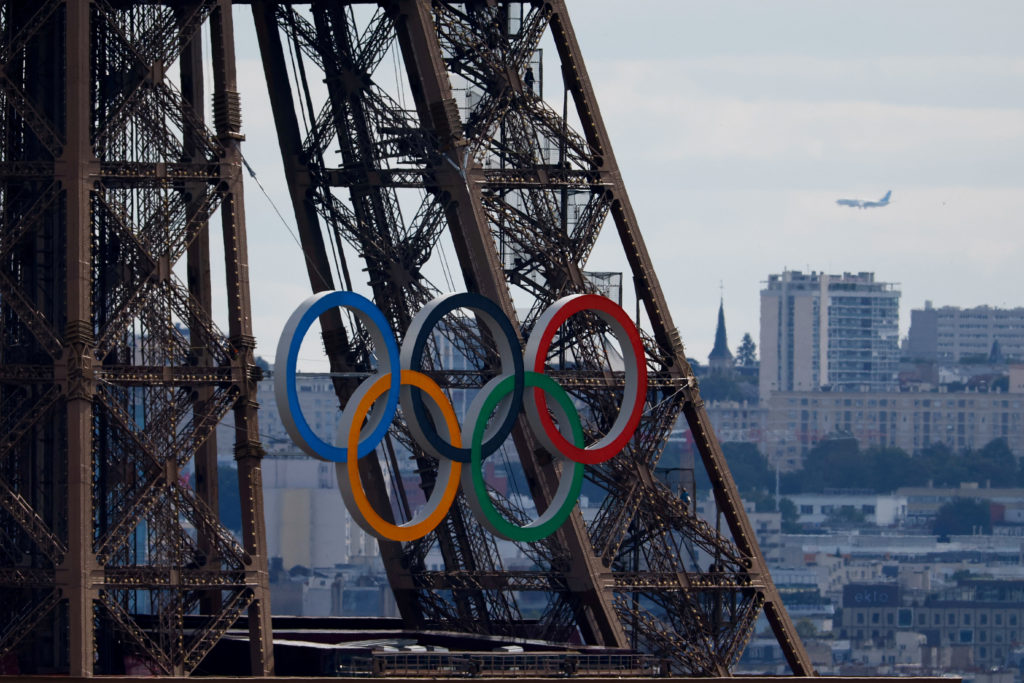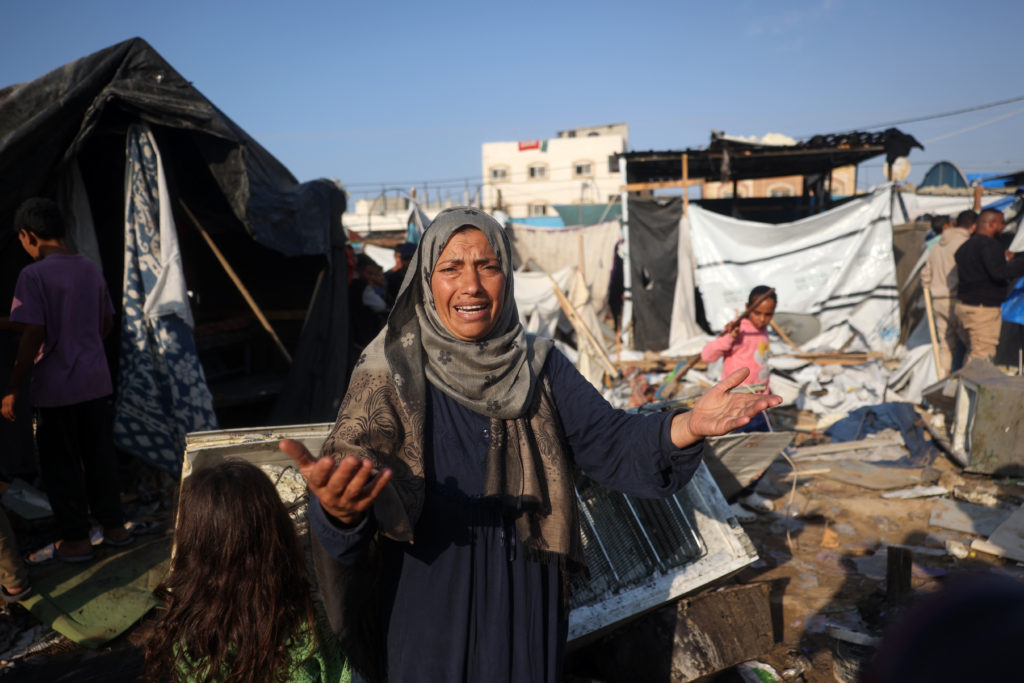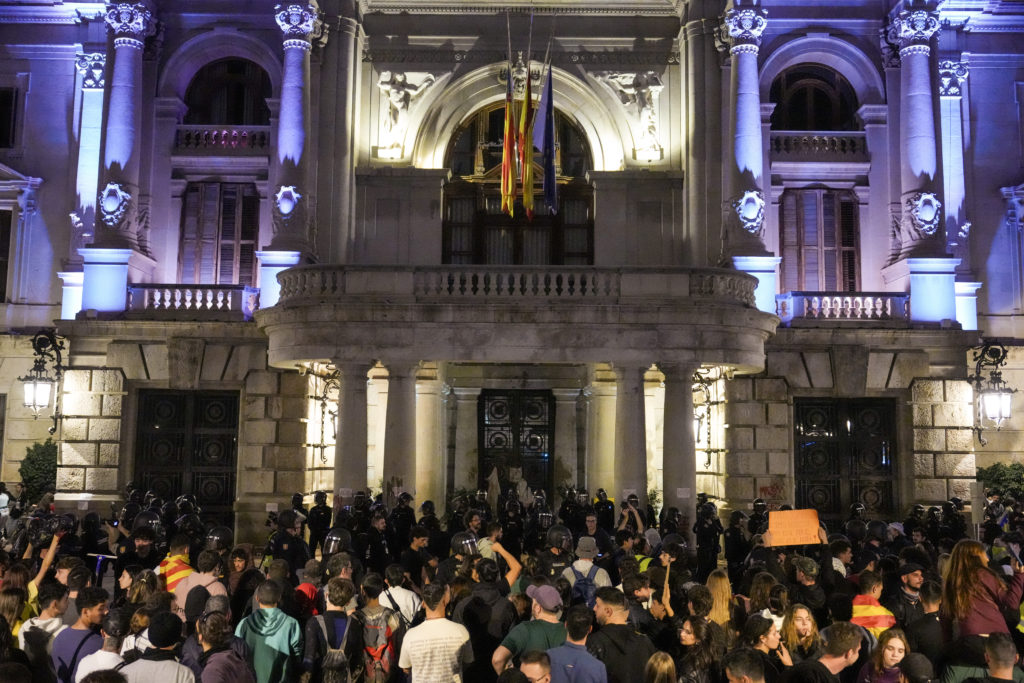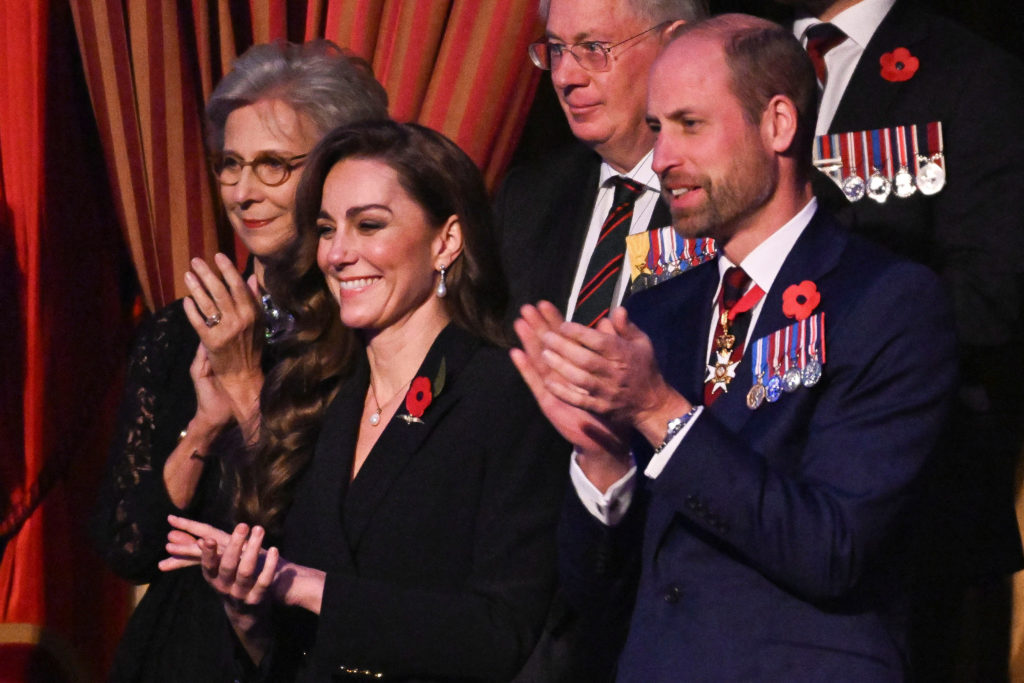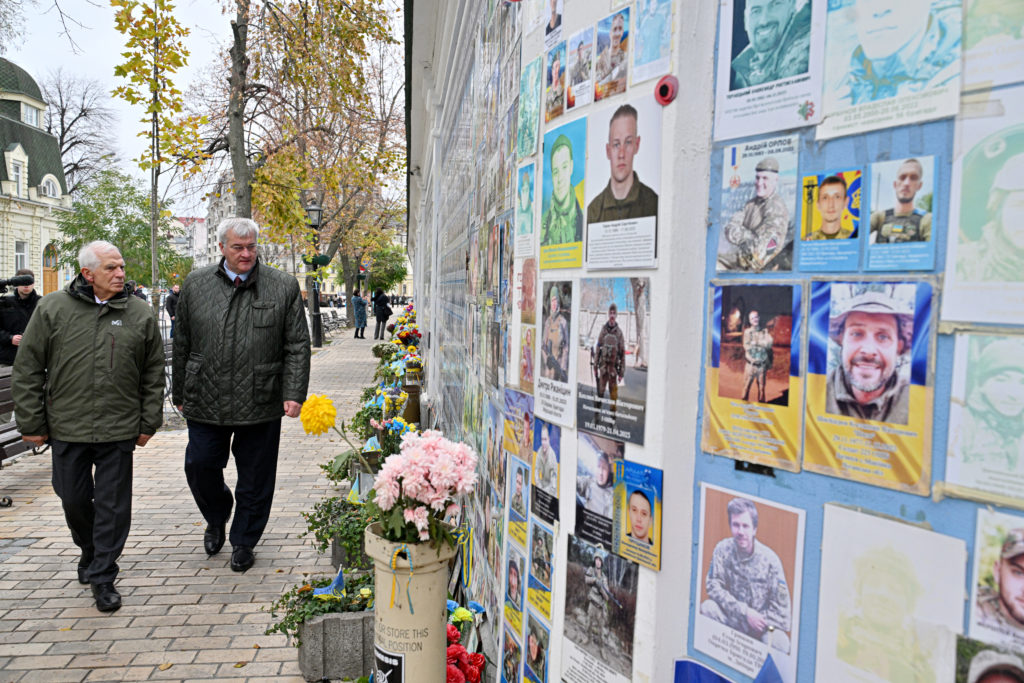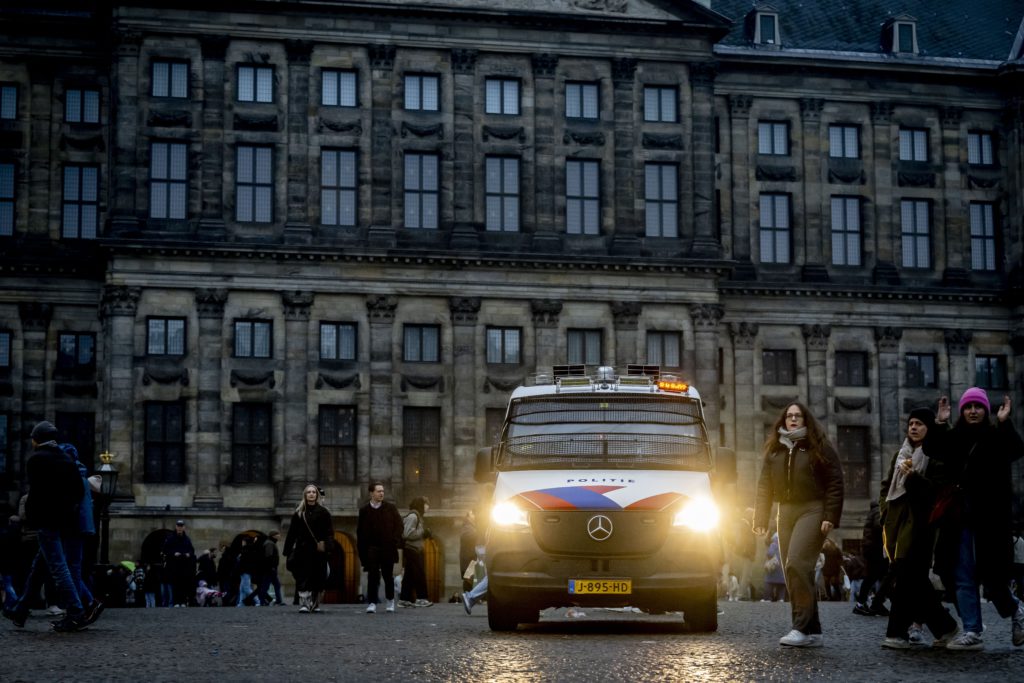On a runway near the Ukrainian border, 14 wide-body aircraft arrive on average each day — a carefully calibrated operation mounted at top speed to deliver tons of Western military assistance to Kyiv.
General Mark Milley, the chairman of the US Joint Chiefs of Staff, inspected the site on Friday — its location is being kept secret for security reasons — where the Pentagon is coordinating the activities of 22 donor countries.
A handful of journalists accompanying Milley were allowed to observe as personnel prepared about 100 Javelin anti-tank missiles for delivery to the border. Pictures were forbidden.
Men in civilian clothes used forklifts to move the missiles, which were stacked on pallets and only covered in plastic.
On the runway, the cargo hold of a US Air Force C-17 transport plane has just been shut — the delivery was complete. At the same moment, another C-17 was landing.
The missiles did not stay in one place for long: they were quickly taken by land to their final destination, military officials said.
As many as 18 deliveries have taken place in a single day at the site. Only about four or five a day are American.
The operation is coordinated by a mix of soldiers and civilians, mainly from NATO member countries, who have come to support Ukraine in its battle against a Russian invading force that is bigger and better equipped.
Beyond assistance from Washington, which has unblocked more than $1 billion in military aid to Ukraine over the past year, several European nations are providing Kyiv with an array of materiel — anti-tank missile launchers, Stinger surface-to-air missiles, armoured vehicles, fuel, munitions, assault rifles and even rations for their troops.
The United States has already delivered two-thirds of the arms it promised in late February to Ukraine, which says it has been able to effectively slow the Russian advance, a Pentagon official said Friday.
And with NATO’s eastern European members deeply worried about Russia’s intentions, Washington has sent thousands of extra troops to reassure them.
– NATO ‘more unified’ than ever –
Those US soldiers are notably deployed in Poland, where Milley visited members of the 82nd Airborne Division stationed at the massive Nowa Deba training ground in the southeast of the country.
To reinforce the ability of US and Polish troops to work together, soldiers from the two countries have intensified their joint exercises over the last two weeks. One such drill was conducted Friday in the presence of Milley.
US tanks simulated an attack while Polish soldiers manning Leopard battle tanks — emerging from a wooded area, flanked by other US tanks — fought back.
Milley said the US soldiers were there to “reinforce the idea that the US is a full-fledged member (of NATO) and we intend to fulfil our NATO Article 5 obligations as a member state,” referring to the alliance’s collective defence pledge.
The commander of US forces in Europe, General Chris Cavoli — who is supervising this deployment — hailed the unprecedented mobilisation of NATO forces over the past two weeks.
“NATO is more unified than I have ever seen NATO unified before,” he said. “I have never seen the resolve and the practical expression of combat readiness that I see in the alliance’s ground forces right now.”
Milley later visited a welcome centre set up shortly before the Russian invasion began for Americans fleeing the fighting.
The centre, located in a conference centre in the southern Polish city of Rzeszow, can house up to 2,500 people. So far, it has not been used, but it could eventually be repurposed for Ukrainian refugees if the flow of migrants grows.
The G2 Arena centre — run by General Chris Donahue, who was the last US soldier to leave Kabul airport last August — is also the temporary home of the 82nd Airborne Division in Poland, and a multinational operations hub.
From their provisional headquarters, soldiers from the 82nd Airborne monitor the number of people arriving at the Polish border from Ukraine.
They also analyse the fighting in Ukraine, to ensure that Western arms shipments arrive safely with Ukrainian forces.

